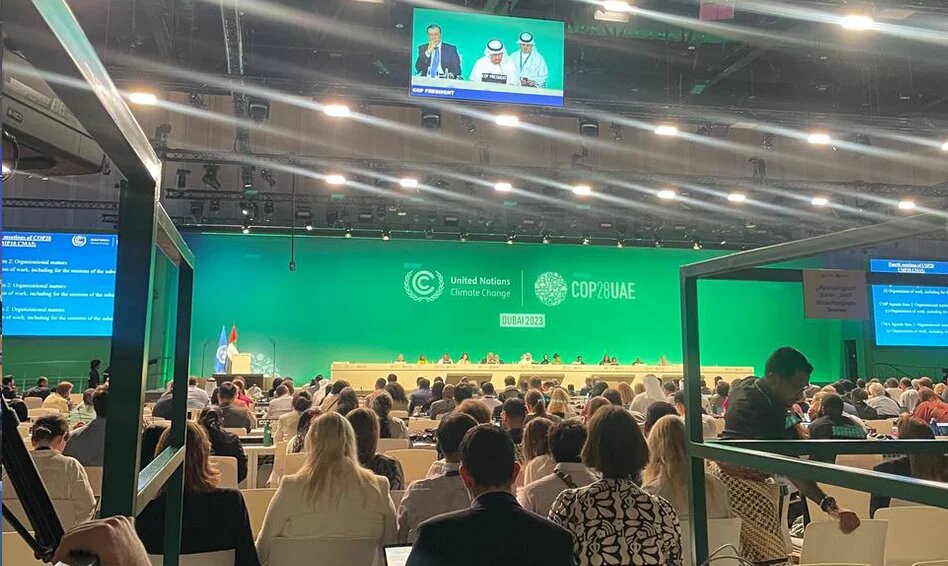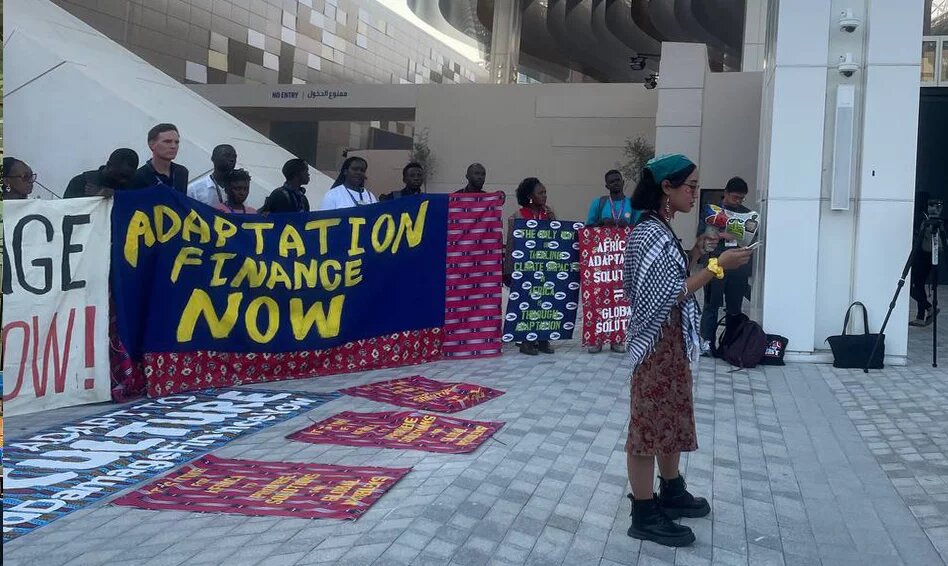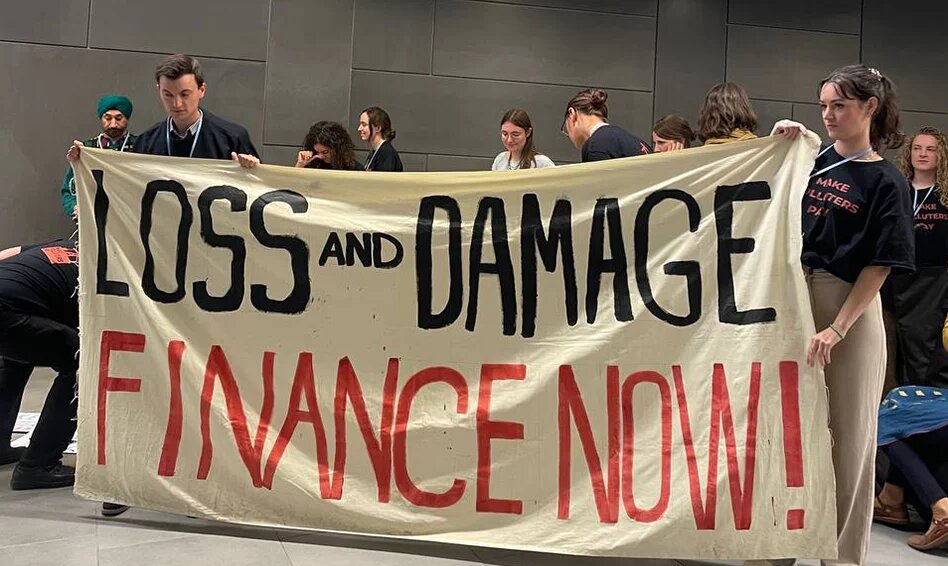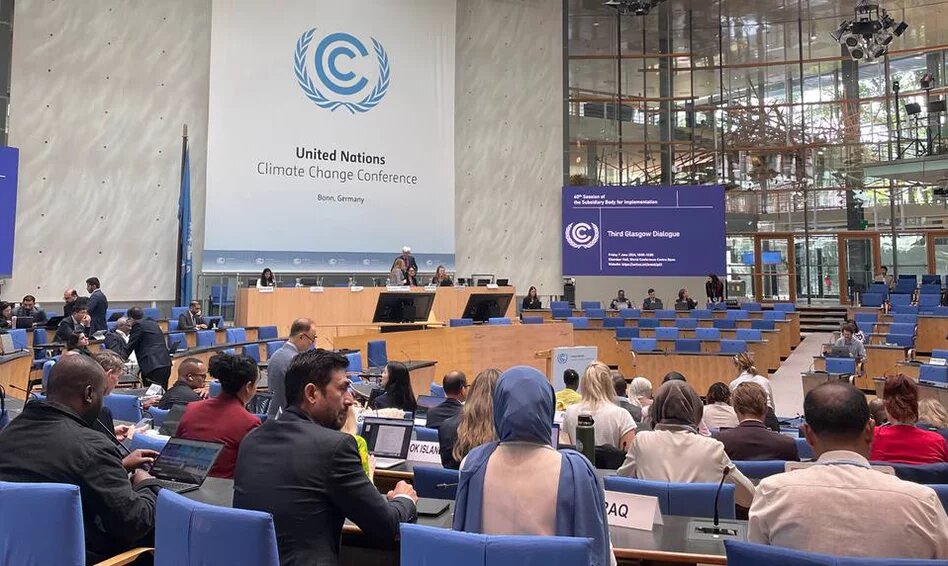
While progress is continuing within the framework of the UNFCCC processes, complementary initiatives are also occurring outside of it. In the Philippines, the recent CLIMA Act is a world-first proposed bill targeting business accountability and upholding human rights, and there is also growing international collaboration and actions at national and sub-national levels.
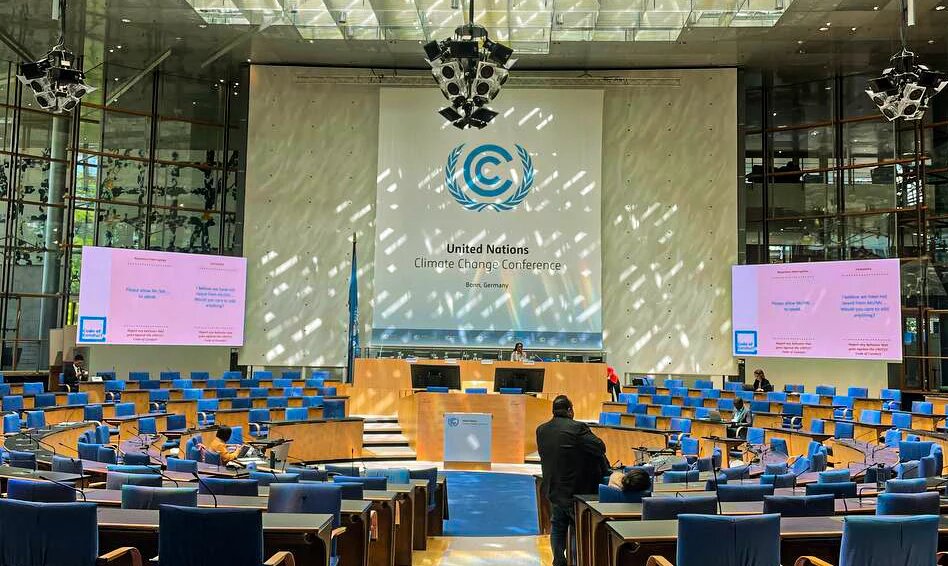
The last few years of climate negotiations via the United Nations Framework Convention on Climate Change (UNFCC) have seen plenty of updates on discussions about loss and damage. The establishment of the Warsaw International Mechanism for Loss and Damage in 2013, the creation of the Santiago Network in 2019, and the decision in 2021 to hold the three-part Glasgow Dialogues are some of these initiatives. In COP28 (UN Climate Change Conference held in Dubai, UAE) in 2023, the Loss and Damage Fund was operationalized, which then led to developed countries’ pledges for the Fund.
As of writing, the current pledges amount to USD 700 million, an amount that, while seemingly substantial, does not adequately meet the needs and demands of developing countries, who are facing losses and damages in unprecedented levels, and are therefore in most need of support.
Though touted as a historic win, the operationalization of the Loss and Damage Fund – without the pledged amounts – will simply be an empty pot, unable to assist developing countries and communities in their efforts to avert, minimize, and address loss and damage.
Therefore, while work is being done within the framework of the UNFCCC processes, other complementary initiatives are also being proposed. Innovative sources of funding have been and are being explored, including the imposition of taxes as well as insurance schemes.
CLIMA Act: Salient provisions proposed in the Philippines
In the Philippines, corporate accountability and upholding human rights is being put to the forefront, beyond addressing only loss and damage. The Climate Accountability Act, more commonly referred to as the CLIMA Act, is draft legislation filed with the House of Representatives as House Bill 9609. The document, potentially the first of its kind worldwide if passed, is a two-fold mechanism: (1) It creates a framework of accountability for businesses, and (2) establishes a loss and damage mechanism. Both mechanisms assist in ensuring that the draft bill is robust and responsive to the needs of communities on the ground.
Framework for business accountability
The bill provides a stringent standard of care in the conduct of businesses, mandating that they shall do no harm throughout their value chain. To this end, businesses are made to take proactive steps to find out facts about possible climate harms that their operations may cause and prevent and address them, adopt measures to shift away from business activities that exacerbate climate change impacts, and have risk management efforts. Moreover, they have the responsibility to ensure that their conduct and policies are in line with the United Nations Guiding Principles on Business and Human Rights, and that they make climate-related financial disclosures, measure their greenhouse gas emissions, and prevent human rights abuses, among others.
General principles of environmental law and policy are likewise incorporated in the bill, including the precautionary principle, the polluter-pays principle, and the common law concept of last clear chance. This doctrine of last clear chance provides that the carbon majors’ (carbon producers featured in the Carbon Majors Database) knowledge of their significant contribution to climate change requires them to reduce their greenhouse gas emissions significantly, and failure to do so implicates them in exacerbating the climate crisis.
The chapter also provides an avenue for litigators to hold businesses liable in court, with provisions on standing and allowing citizen suits. Attribution science, a nascent field of science that has started to gain traction internationally, and which looks at how climate change exacerbates or makes more frequent an extreme event, is also explored in the draft legislation.
Loss and damage mechanisms within the CLIMA Act
In a groundbreaking manner, the bill also provides for ways by which loss and damage can be recouped by individuals and communities through the creation of the Climate Change Reparations Fund (CCRF) and its concomitant Board. The Fund will be a special fund that will be used to finance claims that can take the form of: (a) compensation for economic and non-economic harms, (b) technology transfers; (c) capacity building; (d) financial support; (e) relocation; and (f) recovery and rehabilitation measures, among others.
The role of the Board is broad, including receiving, investigating, and processing claims and administering the Fund. The Act provides that the Board is an independent quasi-judicial body which shall be attached to the Commission on Human Rights (CHR), and that in any proceeding before the Board, the “rules of evidence prevailing in the courts of law or equity shall not be controlling but applied suppletorily.” Furthermore, claimants are not precluded from filing cases in courts separate to and distinct from filing claims before the Board.
Finally, the Act provides for penal provisions and holds businesses liable to any observed adverse impacts on the climate through the line of their work, anchored on Section 32 of the New Civil Code of the Philippines. These penalties can be imposed on greenwashing, climate denialism, breaching of the threshold for acceptable emissions, and the filing of Strategic Lawsuits Against Public Participation (SLAPP) suits, which are actions filed intended to harass or exert undue pressure on any legal recourse that individuals or groups may take to enforce environmental laws.
Currently, the bill has been filed with the House of Representatives. As a government with a bicameral congress, the Senate will also have to produce a companion (identical) bill which will be consolidated and will have to be passed by both chambers and then signed by the President or allowed to lapse into law before it becomes a legislative framework that is part of the national strategy to combat the climate crisis.
Inception of the CLIMA Bill
The bill was introduced after the Philippine Commission on Human Rights (CHR) released its National Inquiry on Climate Change (NICC) Report in May 2022. The report, which was a result of a 7-year long process, was decided upon by the Philippine CHR after a series of multi-country and multi-sector hearings.
In 2013, Typhoon Yolanda (international name Haiyan) ravaged the country, leaving in its wake (USD) billions in damages, hundreds of thousands of lives upended, and thousands dead. More than a decade since, recovery is still underway and it is still slow. Worse, the cumulative impacts of the climate crisis are being felt by individuals and communities on the ground. Therefore in 2015, survivors of Typhoon Yolanda filed a petition before the Commission seeking to establish how climate change is related to the increasing frequency and severity of disasters and how the human rights of Filipinos are affected by these disasters. To bolster their application, the petitioners questioned the role of carbon majors in exacerbating the climate crisis and the impacts that their conduct of business have on Filipino human rights.
In 2022, the Commission released the report, stating among others, that climate change is a fundamental human rights issue. It also provided recommendations to policymakers, legislative bodies, court systems, as well as financial institutions on how to move forward with regard to making decisions that align with country goals both internationally and locally, particularly those relating to environmental protection and climate change. It also provided that individuals and groups can file cases against the carbon majors who are in violation of their human rights obligations in view of climate change, and reminded corporations of their responsibilities under the United Nations Guiding Principles on Business and Human Rights.
While the Commission on Human Rights is a national human rights institution (NHRI) and therefore the NICC holds much weight, it is to be noted that the report is not legally binding. However, it can set a precedent for communities everywhere who may consider filing cases against carbon majors for the latter’s human rights violations, or provide assistance for governments in developing climate policies.
Businesses and climate change: inextricably linked
Critical to the climate change discourse is the increasing acknowledgment of the linkages between business operations and climate change. Oft-cited studies say that the carbon majors producers knew of the adverse impacts of greenhouse gas emissions decades before anyone did, and yet continued business-as-usual, – if not profited immensely – off of this knowledge. Moreover, reports show that a significant amount of greenhouse gases in the atmosphere, responsible for climate change, can be linked to only a select number of economies and corporations, highlighting the ways by which businesses have exacerbated the climate crisis, as well as the responsibility that they bear for addressing, averting, and minimizing further losses and damages.
The bill, therefore, is a mechanism that recognizes this interconnectedness and could be the first national legislation of its kind if passed.
Where to next for loss and damage?
Since the creation of the Loss and Damage Fund in the COP (Conference of the Parties of the UNFCCC), the focus now has shifted towards ensuring that the money, however it is sourced and whatever form it comes, is new, accessible, predictable and adequate for the needs and priorities of developing countries. Moreover, the Fund has to be equitable, rights-based, gender-responsive, and just.
With the conclusion of the Glasgow Dialogues in Bonn, a High-level Dialogue will soon follow, with the expectation of more specific discussions on the Fund, including on access, replenishment, and longevity.
Further, there is an increasing need to look at the oft-overlooked facets of loss and damage – that of non-economic loss and damage, including displacement and mobility, as well as slow onset events. These conversations will likely feature more prominently in the coming months and years, highlighting the many dimensions that attend the loss and damage architecture.
Other initiatives
Outside the UNFCCC processes, other initiatives are also taking shape – all with the end goal of holding countries and corporations accountable for losses and damages, putting human rights at the forefront of the climate discussions, and envisioning a climate-just future.
In addition to the Philippine’s CLIMA Act, which is a national policy framework, internationally for instance, the Vanuatu ICJ Initiative has gained prominence. While not in and of itself a loss and damage mechanism, it represents a parallel process that 18 countries spearheaded asking the International Court of Justice (ICJ) to clarify State obligations and legal consequences in relation to climate change. More specifically, the questions it propounded to the ICJ are as follows: (1) What are the obligations of States under international law to ensure the protection of the climate system from anthropogenic GHG emissions? and (2) What are the legal consequences under these obligations for States where they have caused significant harm? To this end, States are preparing legal submissions and court proceedings are underway. It is expected that the advisory opinion of the ICJ will be released by early 2025.
In addition, several petitions have been filed in both quasi-judicial and judicial bodies everywhere in the world, and plenty of groundbreaking decisions have been heard and decided upon. In 2024, the Inter-American Court on Human Rights was asked to address climate compensation, after Chile and Columbia requested an advisory opinion on climate change and human rights in 2023. Also in 2024, the Supreme Court of New Zealand held that claims in tort relating to damages caused by climate change can proceed to full trial, which is a good first step in the right direction. Many other cases have been filed, and it is expected that climate litigation will also start to feature more prominently in discussions on climate action.
On the legislation side, Vermont in the USA was the first state to charge big oil and other fossil fuel companies liable for climate damage. It created a superfund program, with one of its goals to charge companies doing business within the state billions of dollars for its past emissions.
Connecting climate science and other perspectives
At the same time as legal and political progress on climate change, advances in technology and science are being strengthened. For instance, attribution science, in exploring how climate change is directly linked to extreme events, can be extremely helpful in this regard, and every day more lessons on attribution science are being learned.
Justice, as well as decolonial perspectives, have also been incredibly important in the discourse. Given the historical underpinnings of climate change, intersectional approaches have been fundamental in ensuring that the work on loss and damage is a work that involves – and is for the benefit of – all.
__
Jameela Joy Reyes is a climate justice lawyer affiliated with the Manila Observatory, the Legal Rights and Natural Resources Center (Friends of the Earth Philippines), and the Grantham Research Institute on Climate Change and the Environment. She has co-written articles on climate governance and climate justice, the United Nations Framework Convention on Climate Change (UNFCCC) processes particularly on loss and damage and just transition, and the intersections between environmental and human rights. She is currently taking up her MSc in Global Environment, Politics and Society at the University of Edinburgh, UK.
Disclaimer: This published work was prepared with the support of the Heinrich Böll Stiftung. The views and analysis contained in the work are those of the author and do not necessarily represent the views of the foundation. The author is responsible for any liability claims against copyright breaches of graphics, photograph, images, audio, and text used.
